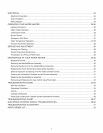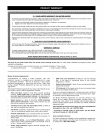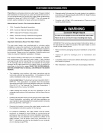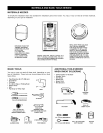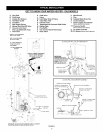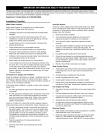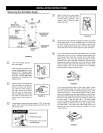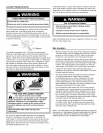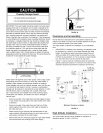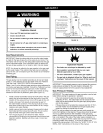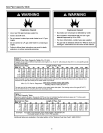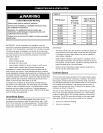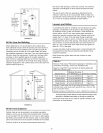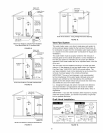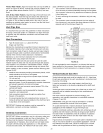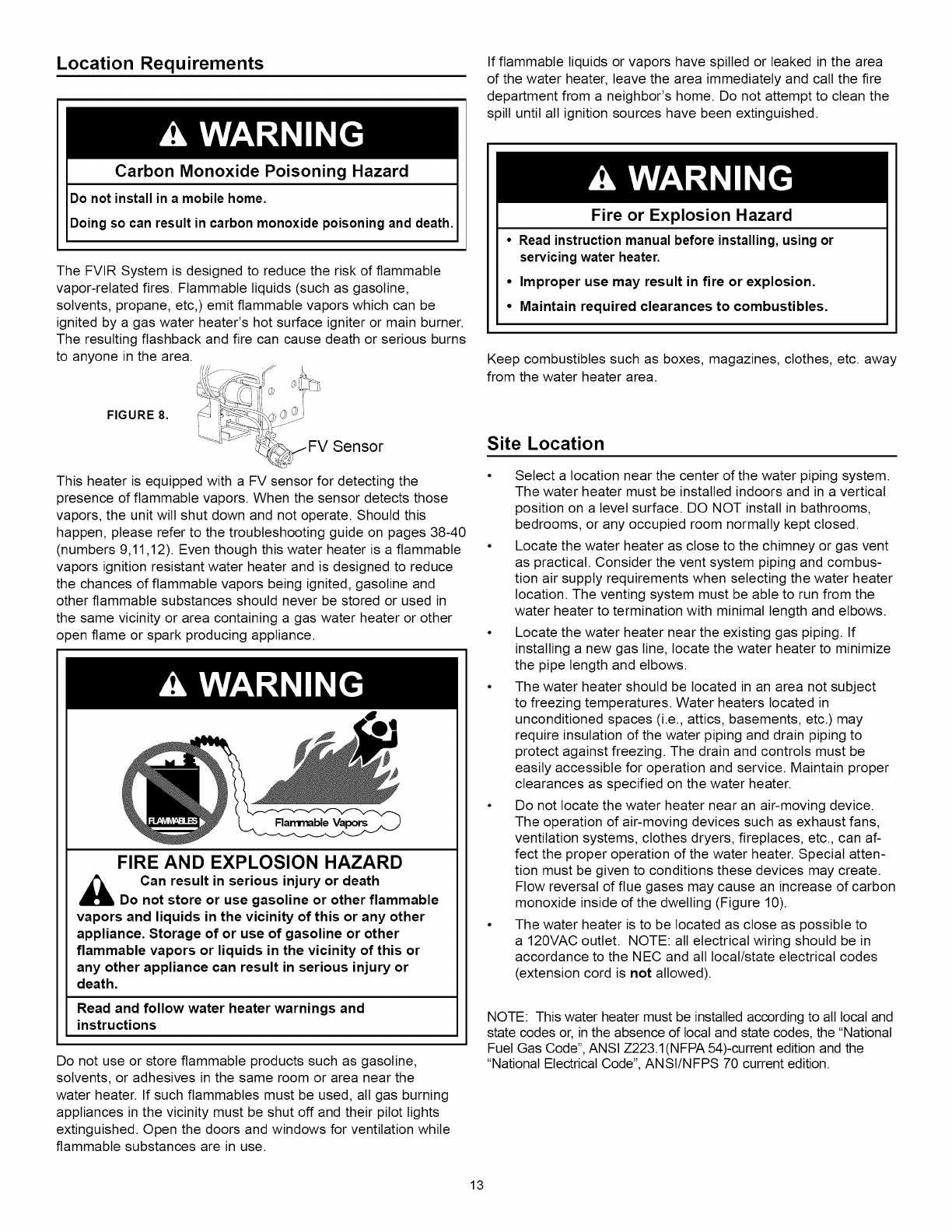
Location Requirements
Carbon Monoxide Poisoning Hazard
Do not install in a mobile home.
Do ng so can resu t n carbon monox de po son ng and death.
The FVIR System is designed to reduce the risk of flammable
vapor-related fires. Flammable liquids (such as gasoline,
solvents, propane, etc,) emit flammable vapors which can be
ignited by a gas water heater's hot surface igniter or main burner.
The resulting flashback and fire can cause death or serious burns
to anyone in the area.
FIGURE 8.
Sensor
This heater is equipped with a FV sensor for detecting the
presence of flammable vapors. When the sensor detects those
vapors, the unit will shut down and not operate. Should this
happen, please refer to the troubleshooting guide on pages 38-40
(numbers 9,11,12). Even though this water heater is a flammable
vapors ignition resistant water heater and is designed to reduce
the chances of flammable vapors being ignited, gasoline and
other flammable substances should never be stored or used in
the same vicinity or area containing a gas water heater or other
open flame or spark producing appliance.
FIRE AND EXPLOSION HAZARD
Can result in serious injury or death
Do not store or use gasoline or other flammable
vapors and liquids in the vicinity of this or any other
appliance. Storage of or use of gasoline or other
flammable vapors or liquids in the vicinity of this or
any other appliance can result in serious injury or
death.
Read and follow water heater warnings and
instructions
Do not use or store flammable products such as gasoline,
solvents, or adhesives in the same room or area near the
water heater. If such flammables must be used, all gas burning
appliances in the vicinity must be shut off and their pilot lights
extinguished. Open the doors and windows for ventilation while
flammable substances are in use.
If flammable liquids or vapors have spilled or leaked in the area
of the water heater, leave the area immediately and call the fire
department from a neighbor's home. Do not attempt to clean the
spill until all ignition sources have been extinguished.
Fire or Explosion Hazard
• Read instruction manual before installing, using or
servicing water heater.
• Improper use may result in fire or explosion.
• Maintain required clearances to combustibles.
Keep combustibles such as boxes, magazines, clothes, etc. away
from the water heater area.
Site Location
• Select a location near the center of the water piping system.
The water heater must be installed indoors and in a vertical
position on a level surface. DO NOT install in bathrooms,
bedrooms, or any occupied room normally kept closed.
• Locate the water heater as close to the chimney or gas vent
as practical. Consider the vent system piping and combus-
tion air supply requirements when selecting the water heater
location. The venting system must be able to run from the
water heater to termination with minimal length and elbows.
• Locate the water heater near the existing gas piping. If
installing a new gas line, locate the water heater to minimize
the pipe length and elbows.
• The water heater should be located in an area not subject
to freezing temperatures. Water heaters located in
unconditioned spaces (i.e., attics, basements, etc.) may
require insulation of the water piping and drain piping to
protect against freezing. The drain and controls must be
easily accessible for operation and service. Maintain proper
clearances as specified on the water heater.
• Do not locate the water heater near an air-moving device.
The operation of air-moving devices such as exhaust fans,
ventilation systems, clothes dryers, fireplaces, etc., can af-
fect the proper operation of the water heater. Special atten-
tion must be given to conditions these devices may create.
Flow reversal of flue gases may cause an increase of carbon
monoxide inside of the dwelling (Figure 10).
• The water heater is to be located as close as possible to
a 120VAC outlet. NOTE: all electrical wiring should be in
accordance to the NEC and all local/state electrical codes
(extension cord is not allowed).
NOTE: This water heater must be installed according to all local and
state codes or, in the absence of local and state codes, the "National
Fuel Gas Code", ANSI Z223.1(NFPA 54)-current edition and the
"National Electrical Code", ANSI/NFPS 70 current edition.
13



